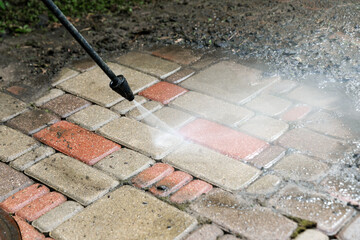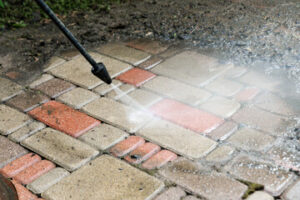A well-done landscape adds beauty to a property and increases its economic value. It can also lower energy costs by buffering seasonal temperatures.
Landscaping Harrisburg PA designs vary widely. Some homeowners want a balanced combination of hardscape and plants. Others desire a specific garden style, such as modern or tropical.
A “public area” is the part of a landscape design that is visible to others. It can include the front yard, the street, and areas surrounding your home. It should be designed to be both attractive and welcoming. To do this, you should consider the views from all angles and locations. Also, you should think about the position of any above-ground or underground utilities.
The main goal of the public landscape is to provide a pleasant environment for pedestrians and other users. This is achieved by using plantings, hardscape elements, and other features to enhance the aesthetics of a space. These include water features, fountains, and statues. In addition, a landscape can also include seating areas and other social spaces, like urban wetlands.
Ideally, a public landscape should be sustainable. This can be accomplished by ensuring that the plants are suitable for the climate and soil conditions, that they are planted in the proper places, and that they are maintained properly. For example, a plant that thrives in the sun may not survive in deep shade.
Another important aspect of a public landscape is the use of textures. This includes both soft and hardscapes, as well as fine and coarse, light or heavy. These are used to create contrast in a design and to create depth. It is also important to note that a landscape should not be too rigid, as this can make it feel unnatural.
While landscaping is an art form, it can be quite technical as well. Landscape designers must have a good understanding of plants, soil, and water, as well as the various environmental factors that impact the landscape. They must be able to use industry software to create designs and work with clients to understand their vision.
There are three major aspects of landscape design: mass, form, and line. The mass of a landscape refers to the overall visual size and scale of a space. The form of a landscape is the shape of its components, such as plants, pathways, and buildings. Lastly, the lines of a landscape refer to the physical flow and connectivity of spaces.
Private Area
The private area is the part of the landscape that encloses your home and provides you with an environment for relaxation, recreation, and privacy. This is where you will want to plant flowering shrubs and roses, shade trees, a lawn, and perhaps even a swimming pool or a patio. This is also the place where you can showcase your favorite specimen plants. Often, the gardener wants to create a view of something spectacular from somewhere in the yard, and this is achieved through the use of design techniques such as vistas and focal points.
In residential landscaping, the designer must consider the function of each plane of space and how transitions between different land uses and zones can be designed to enhance the overall aesthetic. Understanding the dynamics of perspective, for example, is important because it can make a space appear larger or smaller. For instance, a focal point placed in the center of a landscape will draw one’s attention to that area and can make it seem large or confined.
Aside from its aesthetic value, good landscape design adds function to your property. For example, well-placed trees, shrubs, and construction features can increase the utility of your property by providing a cooling effect in summer, blocking wind in winter, or preventing erosion on steep slopes. In addition, the right choice of plants can eliminate weeds and reduce maintenance costs.
Another consideration is the use of lines in your landscape. These can be either straight or curved and are used to emphasize and direct the flow of your landscape. For instance, a formal design will likely feature clear, straight lines, while an informal design may take advantage of curved lines with hardscape elements such as stone pathways or garden fountains. Another consideration is the use of form, which refers to the shape of your plants or hardscape elements such as paths and retaining walls.
Borders
The borders of a landscape design are the frame around the different elements of the design. They help to separate and distinguish between the various features in a way that is pleasing to the eye. They can be made from a variety of materials, including paving stones, wood, wattle, concrete, steel, plastic, and brick or block. Some of these types of borders create a more planned look for the landscaping project, while others provide a more natural look. The best thing about borders is that they can be designed to suit your personal style.
A good landscape design will have a focal point, which can be an element such as a plant, water feature, or artwork. It should also have a balance of color, texture, and form. The idea is to draw the viewer’s attention to a specific point and then gradually guide them around the landscape. This helps to avoid abrupt changes in appearance, which detract from the overall look of the design.
While a beautiful garden can enhance your home’s curb appeal, it can also have many other benefits for you and your family. Research has shown that green spaces can help reduce stress, improve mood, and even promote healing. Whether you are looking for a relaxing place to unwind or a space to entertain friends and family, the right landscape design can make all the difference.
Proper landscaping can also protect the environment and encourage biodiversity. For example, plants help prevent soil degradation, lower atmospheric carbon effects, and attract important wildlife. They also help reduce environmental pollutants and water runoff.
A landscape design can also increase a home’s value. This is because it can add curb appeal, which is an important factor in determining how much people are willing to pay for a house. In addition, well-maintained lawns and gardens can lower water costs by reducing the amount of water that is used for irrigation.
A landscape design can be used in a wide range of projects, from parks and gardens to sports sites and large estates. It can even be used to rehabilitate or enhance brownfield sites and contaminated land. However, it is important to keep in mind that the best landscape designs are those that are both functional and environmentally sustainable.
Plants
Plants are the lifeblood of landscape design. They must be aesthetically pleasing, adapted to the site conditions, and able to be managed for both current performance and future potential. Unlike the hardscaping elements, whose design relies on concrete scientific facts, the design of plants is more of an art form. For example, there is no scientific data to support the claim that a curved foundation planting is superior to one that is straight, but almost everyone agrees that the gracefully curving planting looks more attractive.
Plant selection is based on the design principles of proportion, line, shape, and texture. Proportion refers to the size relationship of an element to the surrounding elements and is especially important for the overall balance of the landscape. The use of different forms, such as round or linear, helps create a sense of rhythm within a landscape. This can be created by contrasting geometric shapes of hardscapes and plantings or by using a naturalistic shape for the planting beds and curvilinear lines for the lawn edges and where the turf meets pavement and other hardscaping elements.
A guiding theme, or approach, should be used to guide the overall design of a landscape. This will help the designer determine the type of plantings and how they will be arranged. For example, a naturalistic approach might be to arrange shrub and flower beds with rounded plants such as azaleas and dogwoods. A formal design might feature straight lines and clipped hedges of boxwoods or yuccas. A garden design influenced by Old World architecture could feature plant materials such as jasmine and crapemyrtle.
Woody ornamental plants, or shrubs and trees, are important parts of most landscape designs. They provide shade, screen views, block out noise, and add structure to the landscape. They can also be used to create windbreaks or for ground cover, and they are a good source of wildlife food.
Ground covers are low-growing plants that hug the soil and act like living mulch. They can be evergreen or deciduous, woody or herbaceous, annual or perennial. Choosing the right plants for the landscape can save money by reducing irrigation requirements and minimizing fertilizer and herbicide needs. It is essential to select the correct plant for each situation based on its mature size and climatic conditions and to space plants based on their final sizes rather than their current height. This will minimize the trampling of smaller plants and the compacting of the soil.



